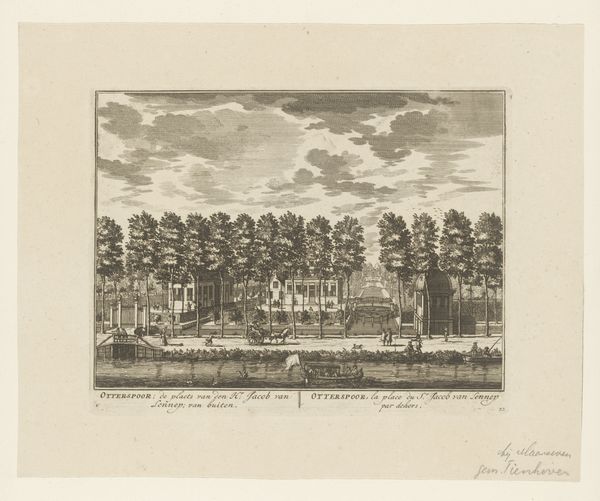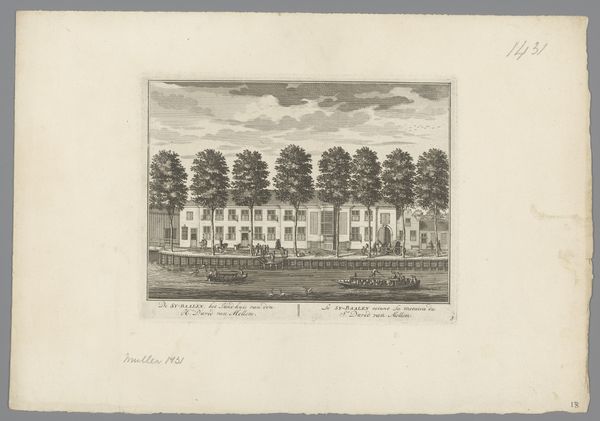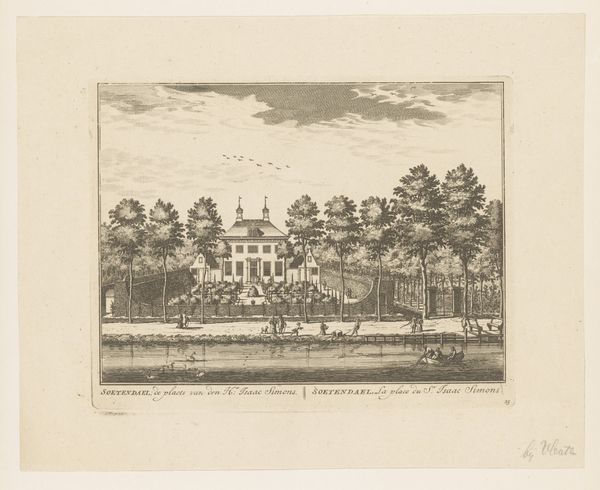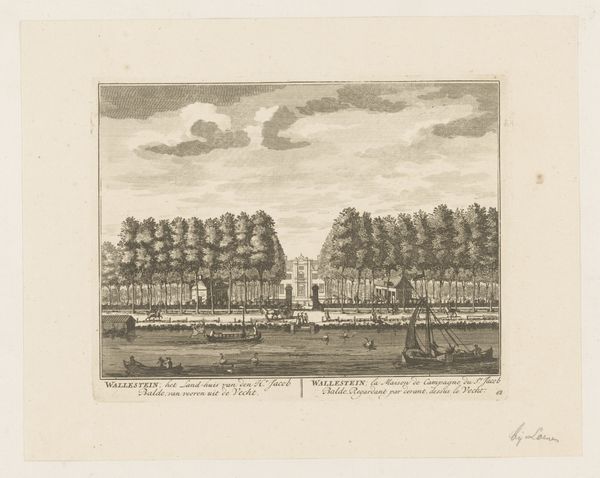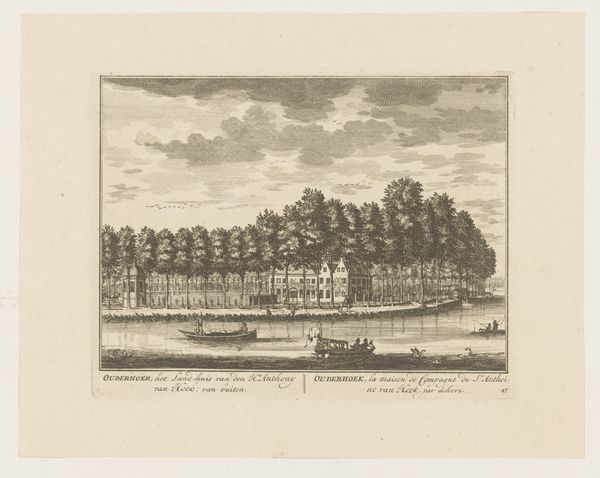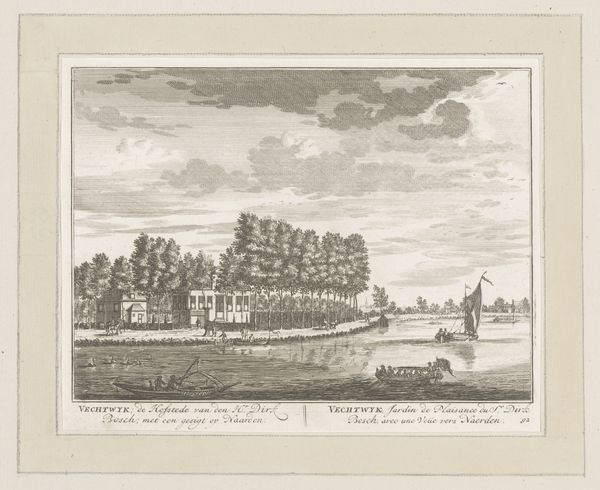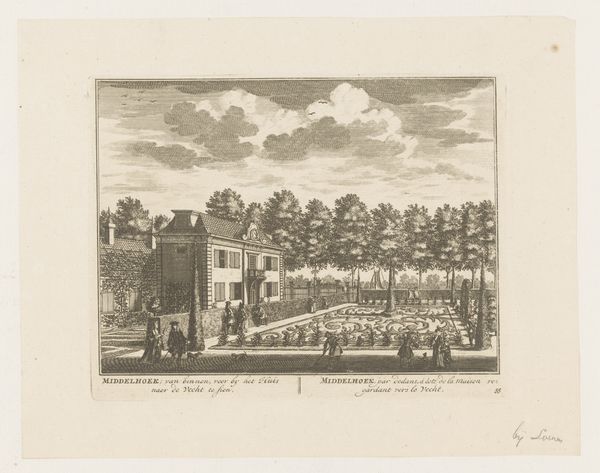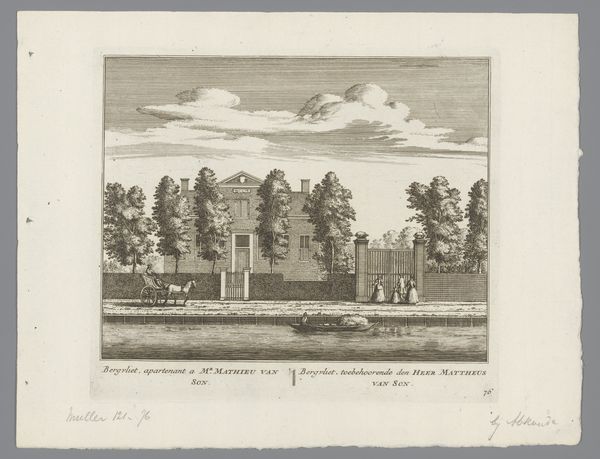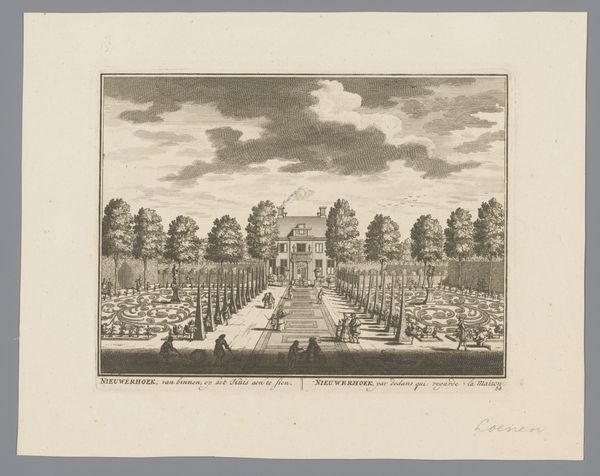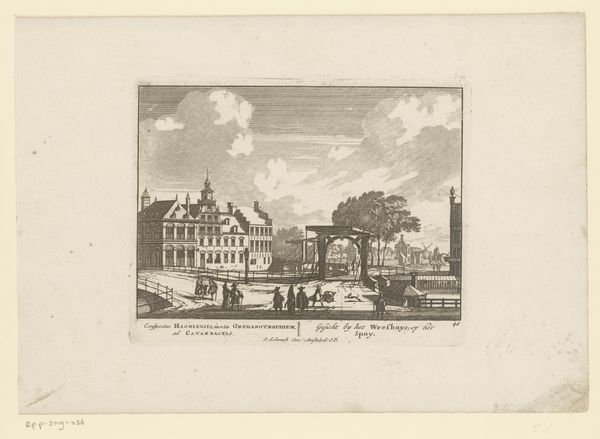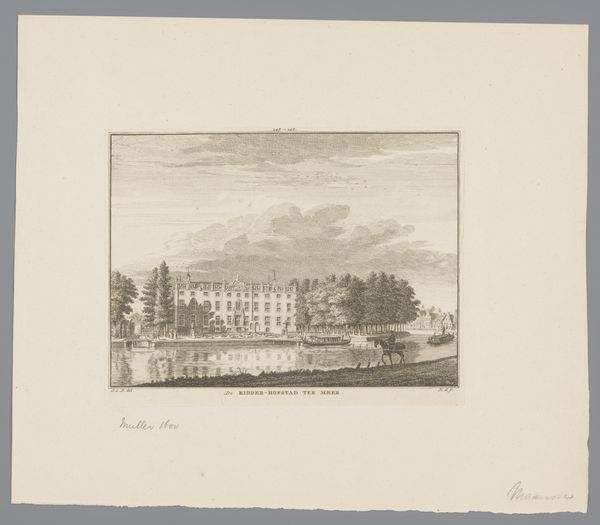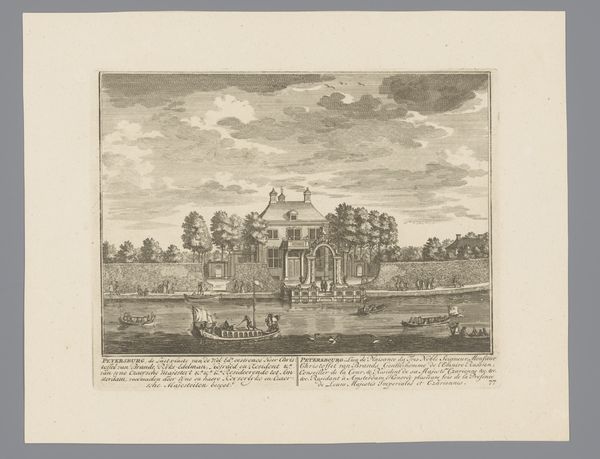
print, etching
#
dutch-golden-age
# print
#
etching
#
landscape
#
etching
Dimensions: height 160 mm, width 205 mm
Copyright: Rijks Museum: Open Domain
Curator: Here we have Daniël Stopendaal's "Gezicht op de buitenplaats Hoogevecht," an etching from 1719. It's currently held at the Rijksmuseum. Editor: The first thing that strikes me is the feeling of utter control. Everything’s so neatly arranged, almost theatrical. You've got the perfectly placed trees, the symmetrical buildings... it feels less like a landscape and more like a stage set. Curator: Precisely. The print demonstrates a profound engagement with space and order. Note how the artist uses linear perspective to create a sense of depth. The eye is directed along the canal, punctuated by the orderly rows of trees, toward the focal point of the country house. Editor: Right, the gaze just glides down that river... and everyone seems to know their place in the picture. Does this orderliness reflect something bigger at the time? Like, were the Dutch trying to exert their dominance over nature or society through these images? Curator: Indeed. In Dutch Golden Age landscapes, the aesthetic control over nature reflects broader societal values. This piece illustrates not just the physical layout of Hoogevecht but also the socio-economic power encoded within land ownership and the era's obsession with creating an idealized, ordered world. Editor: I love that you point that out! You have all these people in boats, on foot, even on horseback—but there's not a sense of joy or abandon in them. More like mannequins moved by some external hand. Gives the place a very...corporate feel! Curator: The lack of spontaneity contributes to the overarching theme of control. Stopendaal’s print invites analysis not only of its artistic merits but as a document reflecting early 18th-century perceptions of landscape and power. Editor: Looking at this piece with fresh eyes now, it does have a certain weight, like history. Thanks for setting the stage, it’s been truly eye-opening! Curator: A pleasure. These landscapes give us unique lenses into the aspirations and values of the society that commissioned and celebrated them.
Comments
No comments
Be the first to comment and join the conversation on the ultimate creative platform.
